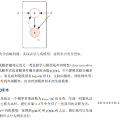The integration of artificial intelligence into digital pathology has the potential to automate and improve various tasks, such as image analysis and diagnostic decision-making. Yet, the inherent variability of tissues, together with the need for image labeling, lead to biased datasets that limit the generalizability of algorithms trained on them. One of the emerging solutions for this challenge is synthetic histological images. However, debiasing real datasets require not only generating photorealistic images but also the ability to control the features within them. A common approach is to use generative methods that perform image translation between semantic masks that reflect prior knowledge of the tissue and a histological image. However, unlike other image domains, the complex structure of the tissue prevents a simple creation of histology semantic masks that are required as input to the image translation model, while semantic masks extracted from real images reduce the process's scalability. In this work, we introduce a scalable generative model, coined as DEPAS, that captures tissue structure and generates high-resolution semantic masks with state-of-the-art quality. We demonstrate the ability of DEPAS to generate realistic semantic maps of tissue for three types of organs: skin, prostate, and lung. Moreover, we show that these masks can be processed using a generative image translation model to produce photorealistic histology images of two types of cancer with two different types of staining techniques. Finally, we harness DEPAS to generate multi-label semantic masks that capture different cell types distributions and use them to produce histological images with on-demand cellular features. Overall, our work provides a state-of-the-art solution for the challenging task of generating synthetic histological images while controlling their semantic information in a scalable way.
翻译:将人工智能纳入数字病理学具有自动化和改善各种任务的潜力,例如图像分析和诊断决策。然而,组织固有的变异性,加上需要图像标签,导致偏颇的数据集,限制了经过培训的算法的通用性。 这一挑战的新兴解决办法之一是合成生理图象。 然而,减少对真实数据集的偏差不仅需要产生光现实图像,而且还需要控制其内特征的能力。 一个共同的方法是使用基因化方法,在反映组织先前知识和组织图象图象图象的语义面罩之间进行图像翻译。 然而,与其他图像域不同,组织结构的复杂结构阻碍了简单创建作为图像翻译模型投入所需要的组织学语义隐含性面具。 而从真实图像中提取的语义面遮罩则减少了过程的缩缩性。 在这项工作中,我们引入了一个可缩略式的模型模型,以DEPAS为首饰, 将骨质组织结构结构结构结构结构结构结构结构结构结构结构结构构造和高清晰度的面具与状态-DNA结构结构结构质量。我们用其内部结构模型生成了一种磁性结构模型。




